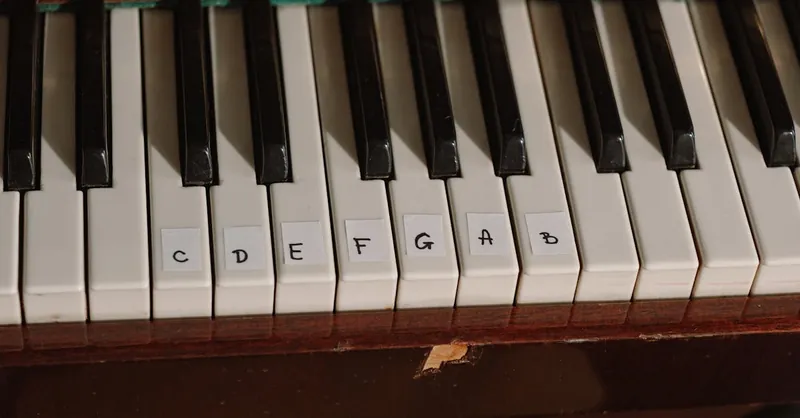Master Music Theory Drills for Guitarists: Beginner’s Guide
Category: Music Theory
Unlock the Power of Music Theory Drills for Guitarists
Are you a beginner guitarist eager to understand music theory but unsure how to practice it in a way that truly sticks? You’re not alone. Many new guitarists find themselves overwhelmed by theoretical concepts that seem disconnected from their instrument. Whether you’ve just started learning chords or want to improve your soloing skills, drilling foundational music theory tailored for guitar can accelerate your progress and boost your confidence.
This post is designed specifically for beginner musicians and music enthusiasts like you who want clear, accessible, and effective music theory drills directly applied to guitar playing. You likely searched for ways to make theory practice more fun and practical, looking to bridge the gap between reading scales or chord charts and making real music.
Unlike generic theory articles, this guide focuses on actionable drills and exercises that integrate theory with your daily guitar practice. We break down essential concepts into manageable sections, helping you grasp intervals, scales, chords, and rhythm in a logical, step-by-step way. Plus, we’ll share tips on how to transfer these skills from practice routines to actual songs and improvisation.
Read on to discover how simple yet powerful music theory drills can transform your guitar playing journey. By the end, you’ll have a clear roadmap for mastering theory fundamentals in a way that feels natural and rewarding.
- Unlock the Power of Music Theory Drills for Guitarists
- Understanding the Basics: Key Music Theory Concepts Every Guitarist Should Know
- Interval Recognition Drills: Training Your Ear and Fretboard
- Scale Practice Drills: Building Speed and Accuracy on Guitar
- Chord Construction Exercises: From Triads to Extended Chords
- Rhythm and Timing Drills: Developing a Strong Musical Foundation
- Applying Theory to Guitar Solos: Practical Improv Drills
- Sight-Reading and Notation Practice for Guitarists: Bridging Notation with the Fretboard
- Combining Theory with Song Learning: Ear Training and Analysis
- Common Challenges and How to Overcome Them in Music Theory Drills
- Creating Your Own Daily Practice Routine Using Music Theory Drills
Understanding the Basics: Key Music Theory Concepts Every Guitarist Should Know
Before diving into effective music theory drills, it’s essential to build a solid foundation by understanding the core concepts that govern how music works—especially when applied to the guitar. Grasping terms like intervals, scales, chords, and keys will not only clarify what you see on the fretboard but also make your practice sessions more focused and productive.
Intervals: The Building Blocks of Melodies and Chords
An interval is the distance between two notes, and recognizing different intervals on the guitar neck is crucial for creating melodies, constructing chords, and developing your ear. Common intervals include seconds, thirds, fourths, fifths, and octaves, each with a unique sound and emotional character. For example, the perfect fifth interval is the backbone of many iconic rock riffs and power chords. Training yourself to identify and play intervals helps you navigate the fretboard with confidence.
Scales: Your Pathways to Melody and Soloing
Scales are organized sequences of notes arranged by pitch, and they serve as the musical vocabulary for soloing, improvisation, and composition. The most important scale for beginners is the major scale, which forms the foundation for many other scales and chords. From pentatonic to blues and modal scales, understanding how to build scales on the guitar fretboard enables you to create expressive solos and melodic lines that fit any musical context.
Chords: Harmonizing Your Playing
Chords group multiple notes played simultaneously and are the harmonic framework of most songs. Starting with basic open chords like C, G, D, and E minor, guitarists quickly learn how chords shape the rhythm and mood of music. As you progress, grasping how chords are constructed from scales—using triads and seventh chords—opens the door to more complex voicings and smoother chord transitions.
Keys: The Musical Home Base
A key defines the tonal center of a song—the note and scale around which other notes revolve. Knowing the key helps you understand which chords and scales naturally fit together. For guitarists, this knowledge simplifies choosing appropriate riffs and improvisation patterns, making your playing sound coherent and polished.
By mastering these essentials—intervals, scales, chords, and keys—you create a practical framework that transforms abstract theory into real-world guitar skills. The following drills will build on these concepts, reinforcing your understanding as you play.

Image courtesy of cottonbro studio
Interval Recognition Drills: Training Your Ear and Fretboard
One of the most powerful ways to deepen your understanding of music theory on guitar is through interval recognition drills. These exercises train your ear to identify the distinct sound of each interval while simultaneously familiarizing your fingers with their fingerboard positions. Developing this dual skill not only enhances your ability to hear and anticipate melodic movement but also organically improves fretboard navigation and improvisation.
Why Interval Recognition Is Essential for Guitarists
Intervals form the DNA of melodies and chords, so recognizing them by ear is crucial for playing by ear, transcribing songs, and crafting solos that sound musical. On the guitar, where the same note can appear in multiple positions, being able to associate an interval’s sound with a specific fretboard shape helps you play more fluidly and creatively. These drills sharpen both your aural skills and fingerboard knowledge, bridging the gap between theory and practical playing.
Sample Interval Recognition Exercises for Guitar
Try incorporating the following exercises into your daily practice routine:
- Single-String Interval Identification: Play the open string then fret a note at various intervals (minor second, major third, perfect fifth, octave) on the same string. Listen and sing the interval before playing it to internalize the sound distance.
- Two-String Interval Recognition: Play intervals across adjacent strings (for example, the perfect fourth or major sixth). This mimics common chord and melodic shapes and strengthens multi-string awareness.
- Interval Singing Exercise: Pick a random interval shape on the fretboard, play it, and then vocally reproduce the interval. This reinforces ear-to-fretboard connection.
- Interval Flashcards: Create or use digital interval flashcards that play an interval sound. Identify the interval by ear, then find and play it on your guitar.
Consistent practice with these drills builds a strong mental map of how intervals sound and feel on the guitar. Over time, you’ll find it easier to recognize intervals in music, make informed note choices when improvising, and communicate musical ideas more effectively. Interval recognition acts as a foundational skill that supports all other areas of music theory and guitar mastery.

Image courtesy of Akbar Nemati
Scale Practice Drills: Building Speed and Accuracy on Guitar
Mastering scales on the guitar is a fundamental step toward fluent fretboard navigation and expressive soloing. To develop both speed and accuracy, deliberate and focused scale practice drills are essential. These exercises help internalize the patterns of major, minor, and pentatonic scales, transforming theoretical knowledge into muscle memory that you can rely on during improvisation and composition.
Structured Scale Practice for Maximum Impact
Incorporate these key drills into your daily routine to accelerate your scale mastery:
- Slow and Clean Ascending/Descending Runs: Start by playing the scale notes slowly, focusing on precise finger placement and clean tone. Gradually increase speed as accuracy improves, using a metronome to keep consistent timing and enhance rhythmic control.
- Alternate Picking with Scale Patterns: Combine right-hand alternate picking techniques with left-hand scale shapes. This synchronizes picking and fretting, essential for fluid and fast playing.
- Sequencing Within Scales: Break down scales into smaller groups (e.g., sets of three or four notes) and practice sequences such as 3-1-2-4 or 4-2-3-1. Sequencing reinforces note recognition and finger dexterity beyond simple straight runs.
- Position Shifts and String Skipping: Move through the same scale across different positions on the neck to understand how the scale connects fretboard-wide. Incorporate string skipping exercises to improve hand coordination and melodic phrasing options.
- Pentatonic Box Drills: Focus on the five pentatonic scale boxes, practicing them individually and linking them smoothly. The pentatonic scale’s simplicity makes it perfect for building fast, expressive licks and improvisation foundations.
Why These Drills Matter for Guitarists
Regularly drilling major, minor, and pentatonic scales ingrains the scale patterns, intervals, and sound characteristics deeply in your mind and fingers. This muscle memory accelerates your ability to improvise confidently in any key or mode, while also strengthening your finger independence, picking accuracy, and rhythmic precision. Moreover, by practicing with a metronome and sequencing exercises, you lay the groundwork for playing complex musical passages at faster tempos without sacrificing clarity or tone.
By dedicating time to these targeted scale drills, beginner guitarists transform theoretical scale knowledge into practical, on-the-fly musical creativity—ultimately elevating their overall musicianship and guitar technique.

Image courtesy of Akbar Nemati
Chord Construction Exercises: From Triads to Extended Chords
Understanding how chords are built on the guitar is a crucial step for any beginner guitarist aiming to deepen their music theory knowledge and improve their playing versatility. Chord construction drills focus on breaking down chords into their fundamental components—from simple triads to more complex extended chords—helping you visualize and memorize common shapes and inversions on the fretboard. By practicing these exercises, you empower yourself to recognize chord tones within scales, create richer harmonic textures, and navigate chord changes with confidence.
Building Chord Shapes Step-by-Step
Start by learning the three-note triads—major, minor, and diminished—which form the foundation of most chords:
- Major Triads consist of the root, major third, and perfect fifth.
- Minor Triads replace the major third with a minor third.
- Diminished Triads include a minor third and diminished fifth.
Practice playing these triads in multiple positions along the neck, and focus on identifying the root note’s location within each shape. This solidifies your understanding of chord intervals and their sonic qualities.
Exploring Chord Inversions and Extended Chords
Once comfortable with triads, move on to chord inversions—alternative voicings where the chord tones (root, third, fifth) are rearranged, changing which note is in the bass. Drilling inversions develops fretboard familiarity and adds tonal variety to your rhythm playing:
- Practice playing the same triad in root position and then invert it by shifting the bass note up to the third or fifth.
- Experiment with movable shapes of first and second inversions across strings.
After mastering inversions, integrate extended chords (sevenths, ninths, elevenths, and thirteenths) to add color and complexity to your harmonic vocabulary. Begin with the most common shapes such as dominant 7th (7), major 7th (maj7), and minor 7th (m7) chords, focusing on how the added intervals influence the chord’s sound.
Daily Drill Suggestions for Chord Construction
- Triad Mapping: Choose a key and play all three triads (major, minor, diminished) in different positions across the fretboard.
- Inversion Practice: Take one chord and play its root, first, and second inversions in sequence, aiming for clean transitions.
- Extended Chord Exploration: Add sevenths to triads and experiment with common jazz or blues chord voicings, paying attention to finger placement and tone.
- Chord Tone Identification: While playing scales or improvising, pick out the chord tones to reinforce their sound and location.
Incorporating these chord construction exercises into your practice routine enhances your ability to build chords logically and apply them fluidly in rhythm and lead contexts. Over time, this confidence with chord shapes and inversions will enrich your songwriting, accompaniment, and overall guitar musicianship.

Image courtesy of Photo By: Kaboompics.com
Rhythm and Timing Drills: Developing a Strong Musical Foundation
Mastering rhythm and timing is just as crucial as understanding melody and harmony for any guitarist aiming to become a well-rounded musician. Without solid rhythmic skills, even the most technically perfect notes can sound disjointed or lifeless. Incorporating focused rhythm and timing drills into your practice routine develops your ability to stay in the groove, recognize rhythmic patterns, and play confidently with others.
Using a Metronome to Improve Timing Precision
A metronome is an essential tool for honing consistent timing. Start by setting your metronome to a comfortable tempo and practice simple chord strums or scale runs in sync with the beats. This trains your internal clock to lock onto steady pulses, reducing tendencies to rush or drag. Gradually increase the tempo as your accuracy improves to build speed without sacrificing clarity.
Practicing Rhythmic Patterns Relevant to Guitarists
Aside from basic quarter and eighth note timing, guitarists benefit greatly from drills that emphasize common rhythmic subdivisions and patterns found in popular music genres such as rock, blues, funk, and jazz. Practice the following exercises regularly:
- Open-String Strumming with Varied Rhythms: Strum open strings using patterns like:
- Eighth note alternate strumming (down-up-down-up)
- Syncopated rhythms emphasizing off-beats
- Triplet feels to internalize swinging grooves
- Chord Rhythms with Muted Strings: Add percussive muted strums between chord hits to mimic groove-based rhythm guitar parts.
- Rhythmic Accent Exercises: Work on accenting specific beats within a measure to develop dynamic control and rhythmic interest.
- Subdivision Isolation: Play scales or riffs focusing on subdividing beats into sixteenth notes or triplets, maintaining strict timing with the metronome.
By consistently integrating these rhythm drills, you not only improve your rhythm recognition but also develop the muscle memory to execute complex timing nuances on the fretboard. This strong rhythmic foundation will empower you to lock in tightly with drummers and other musicians, making your guitar playing feel grounded, expressive, and musical.
In summary, rhythm and timing drills are indispensable for beginner guitarists looking to elevate their playing from merely technical to truly musical. Use a metronome daily, explore rhythmic patterns, and challenge yourself with varied subdivisions to build a robust temporal sense that supports all your music theory and guitar skills.

Image courtesy of Akbar Nemati
Applying Theory to Guitar Solos: Practical Improv Drills
Once you have a solid grasp of intervals, scales, chords, and keys, it’s time to bring theory to life through focused improvisation drills. Applying music theory to guitar solos isn’t just about playing scale patterns—it’s about creatively using intervals and scales to develop memorable melodic ideas and express your musical personality.
Guided Improv Drill Ideas for Melodic Development
- Scale Fragment Improvisation: Choose one scale (e.g., the pentatonic or major scale) and improvise using only small fragments of 2-3 notes at a time. This encourages you to think melodically rather than playing all notes at once, fostering more interesting phrasing and thematic development.
- Intervallic Soloing: Focus on soloing using specific intervals—start with perfect fourths or fifths, then add thirds and sixths. This drill sharpens your ear for interval sounds while encouraging unique melodic shapes beyond scale runs.
- Target Note Emphasis: Pick chord tones from the backing progression and practice landing on these notes during your solo. This helps connect your improvisation directly to the harmony, making your playing sound more musical and intentional.
- Call and Response: Improvise a short melodic phrase, then echo or answer it with a varied response. This conversational approach trains your musical creativity and phrasing dynamics.
- Rhythmic Variation in Soloing: Practice playing solos using different rhythmic groupings like triplets, syncopation, or rests. This variation enhances the expressiveness and groove of your solos.
Why Practical Improv Drills Boost Soloing Skills
These targeted improvisation exercises build a direct link between theory knowledge and expressive guitar playing. By drilling focused drills that emphasize interval choices and scale fragments, you train your hands and ears to instinctively craft melodic lines that fit the backing context. Over time, this skill transforms routine scale practice into vibrant, creative solos that are both technically sound and emotionally engaging.
Integrating guided improv drills into your routine accelerates your ability to use theory creatively, helping you break out of repetitive licks and develop a personal soloing style grounded in solid music theory principles.

Image courtesy of Anastasia Lashkevich
Sight-Reading and Notation Practice for Guitarists: Bridging Notation with the Fretboard
For beginner guitarists, improving sight-reading skills and fluency in music notation is a game-changer that speeds up learning new pieces and deepens theoretical understanding. Many guitarists struggle to connect the dots between written notes on the staff and their corresponding positions on the guitar fretboard. Targeted drills that combine reading notation with fretboard mapping help eliminate this disconnect, making sight-reading more intuitive and efficient.
Effective Strategies for Sight-Reading Drills on Guitar
- Start with Single-String Reading: Focus on one string at a time and read simple melodies or scale exercises from standard notation. This isolates note recognition without overwhelming fretboard shifts.
- Map Notes Visually: Use fretboard diagrams alongside notation to identify the exact fret and string for each note. Repeating this mapping drills solidifies instant recognition.
- Interval Identification in Notation: Practice spotting intervals between notes on sheet music and then playing those intervals on the guitar. This reinforces your ability to interpret written music and translate it physically.
- Rhythm and Note Reading Combined: Incorporate rhythmic values (quarter notes, eighth notes, rests) with note reading exercises to build comprehensive sight-reading skills that include timing and pitch together.
- Use Simple Etudes and Exercises: Employ beginner-friendly sight-reading books or online resources designed specifically for the guitar, featuring gradually increasing complexity in notation and fretboard positions.
- Daily Short Sessions: Regular, focused sight-reading practice—just 5 to 10 minutes a day—builds your reading fluency without causing fatigue or frustration.
By consistently practicing these notation drills, guitarists develop a stronger link between the written score and the instrument’s physical layout, empowering faster learning and more confident playing. Improving sight-reading isn’t just about reading music faster; it enhances your overall musicianship, ear training, and ability to communicate with other musicians through standard musical language.

Image courtesy of Photo By: Kaboompics.com
Combining Theory with Song Learning: Ear Training and Analysis
A powerful way to internalize music theory concepts and deepen your guitar skills is by applying theory directly to songs through ear training and song analysis. Instead of viewing theory as abstract knowledge, use it as a tool to dissect and understand real music you love. This approach enhances your ability to memorize songs, improvise within their structures, and develop a more intuitive musical ear.
Practical Techniques for Analyzing Songs by Ear Using Theory
To get started, follow these steps to combine music theory with active listening and playing:
- Identify the Key and Scale: Listen to a song carefully and determine its key by finding the tonal center or “home” note. Use your knowledge of scales to verify which scale type (major, minor, modal) fits the melody and harmony.
- Recognize Chord Progressions: Try to pick out the chords by ear one at a time. Use chord construction theory—such as triads and seventh chords—to name or find these chords on the guitar. Mapping out the progression enhances your harmonic vocabulary and helps anticipate chord changes.
- Spot Recurrent Intervals and Motifs: Pay attention to recurring melodic intervals or rhythmic patterns within the song. Relating these motifs to scale fragments and interval drills you’ve practiced solidifies understanding and makes it easier to memorize parts and improvise accordingly.
- Transcribe Simple Melodies or Riffs: Write down or tab out the main melodic phrases using notation or guitar tab. Transcribing reinforces pitch recognition, interval relationships, and rhythm comprehension, turning theoretical concepts into concrete musical material.
- Sing or Hum Along with Theory in Mind: Vocalizing melodies and intervals while referencing their theoretical role in the song strengthens ear training and internalizes abstract concepts.
Benefits of Integrating Ear Training and Theory with Song Learning
- Develops aural skills that help you play by ear and quickly learn new songs without reliance on tabs or sheet music.
- Reinforces your grasp of keys, scales, and chord functions within practical contexts, making theoretical ideas more memorable.
- Improves your ability to improvise and compose by understanding how theory shapes the songs you enjoy.
- Enhances your overall musicianship by linking ear, theory, and fretboard knowledge into a cohesive skill set.
By embedding music theory drills within real song analysis and ear training, beginner guitarists transform passive listening into an active, educational experience. This holistic practice method not only accelerates learning but also makes music theory deeply relevant and personally meaningful.

Image courtesy of Akbar Nemati
Common Challenges and How to Overcome Them in Music Theory Drills
As a beginner guitarist, it’s perfectly normal to encounter some roadblocks while working through music theory drills. The most frequent challenges include memorization difficulties, issues with hand-eye coordination, and the daunting gap between theoretical knowledge and practical application on the guitar. Recognizing these obstacles early allows you to tackle them strategically, ensuring your progress stays steady and rewarding.
Overcoming Memorization Hurdles
Memorizing scales, intervals, chord shapes, and their theoretical relationships can feel overwhelming because it involves both intellectual understanding and motor memory. To combat this, break down information into small, manageable chunks and focus on one concept at a time. For example, master all the intervals on a single string before expanding across the fretboard. Using mnemonics, flashcards, and associating sounds with visual fretboard patterns boosts retention. Repetition combined with active recall—such as testing yourself without looking at your notes—strengthens memory far more effectively than passive review.
Improving Coordination Between Hands and Mind
Many beginners struggle with synchronizing their left-hand fingerings and right-hand picking or strumming patterns while simultaneously processing theoretical ideas. This split attention often leads to mistakes and frustration. The key to overcoming coordination challenges is slow, deliberate practice: slow down drills to a tempo where accuracy is guaranteed, then gradually increase speed. Isolate difficult movements with focused exercises—such as practicing scale fingering without picking, then adding picking slowly. Employing a metronome to develop rhythmic consistency also enhances overall coordination.
Bridging the Theory-to-Practice Gap
Understanding music theory concepts in the abstract can feel disconnected from actually playing the guitar. To bridge this gap, consistently apply theory through contextualized drills and musical examples. Instead of memorizing scales or chord formulas alone, practice them within the framework of songs, riffs, and improvisation exercises. For instance, after learning a scale, create simple licks using those notes or analyze chord progressions in your favorite songs to see theory in action. This approach turns abstract knowledge into practical skills, making theory directly relevant and much easier to assimilate.
By addressing these common challenges with targeted strategies, beginner guitarists can transform music theory drills from daunting tasks into engaging, productive learning experiences that directly enhance their playing and musicianship.

Image courtesy of Akbar Nemati
Creating Your Own Daily Practice Routine Using Music Theory Drills
Developing a consistent, well-structured daily practice routine is key to turning music theory drills into tangible improvements on the guitar. To maximize the effectiveness of your practice sessions, it’s essential to balance different elements of theory—intervals, scales, chords, rhythm, and improvisation—while keeping your sessions engaging and goal-oriented. A thoughtfully crafted routine not only reinforces your theoretical knowledge but also strengthens your technical skills and musical intuition systematically over time.
Structuring Balanced Practice Sessions
Here’s a practical framework to design your daily practice incorporating music theory drills effectively:
- Warm-Up with Intervals and Ear Training (5–10 minutes): Start by tuning your ear and fingers with interval recognition drills or simple interval singing exercises. This primes your mind for focused learning and enhances your aural skills right from the outset.
- Scale Practice and Technical Drills (15–20 minutes): Move on to scale drills emphasizing accuracy, speed, and sequencing. Alternate picking and position shifts within scales train both hands and deepen your understanding of scale patterns across the fretboard.
- Chord Construction and Rhythm Exercises (10–15 minutes): Integrate chord building by exploring triads, inversions, and extended chords alongside rhythm and timing drills using a metronome. Focus here sharpens harmonic knowledge and groove feel simultaneously.
- Improvisation and Creative Application (10–15 minutes): Apply the theory you have drilled by engaging in targeted improvisation exercises, such as intervallic soloing or scale fragment improvisation. This stage bridges theory with real musical expression.
- Song Analysis and Sight-Reading (Optional, 5–10 minutes): Include short sessions of sight-reading or dissecting songs by ear to connect theoretical knowledge to practical repertoire learning.
Tips for Consistency and Progress
- Set Clear, Achievable Goals: Define specific objectives for each session, like mastering a particular scale pattern or improving your timing with a tricky rhythm.
- Use a Practice Journal: Track your daily drills, note challenges, breakthroughs, and ideas for the next sessions to maintain motivation and monitor progress.
- Keep Sessions Time-Bound: Even 30–45 minutes daily with focused theory drills beats irregular lengthy practices.
- Mix Theory with Musical Fun: Balance technical drills with playing songs or jamming to keep enthusiasm high.
- Regularly Review and Rotate Drills: Revisit core drills periodically while introducing new challenges to avoid plateauing.
By designing a consistent practice routine that integrates music theory drills across multiple skill areas, you develop a well-rounded musicianship foundation on guitar. This deliberate, balanced approach ensures your theoretical knowledge becomes second nature, translating smoothly into confident, expressive playing.

Image courtesy of Artem Podrez
